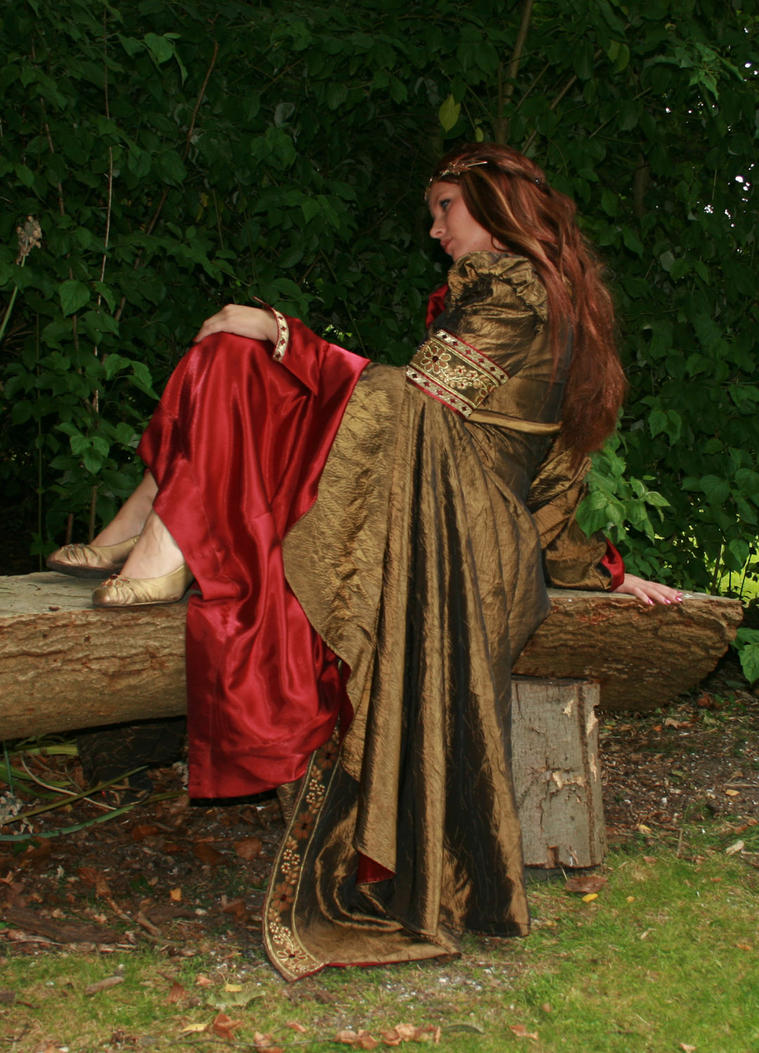 http://queenguinevere.tripod.com/queenguinevere.htm
http://queenguinevere.tripod.com/queenguinevere.htm
Once Arthur was firmly established on the throne, and despite Merlin's warnings she would one day betray him, Arthur chose Guinevere, to become his wife. As a dowry she brought the great round table capable of seating one hundred and fifty knights, made by Merlin at the bidding of Arthur's father, Uther Pendragon. In Gawain and the Green Knight, it is stated the reason Morgan le Fay sent the Green Knight to Camelot was to frighten Guinevere. One reason given was because of an old rivalry, dating back to the beginning of Arthur's reign when Guinevere had banished one of Morgan's lovers from court. Another reason is the representation of Guinevere and Morgan as two goddesses of very different aspect. Morgan, as her origin in the figure of Morrighan indicates, is a dark goddess and represents the powerful qualities of winter and warfare. On the other hand, Guinevere is called the Flower Bride, representing spring and the unfolding of life. As such, these two women are constantly in opposition. Lancelot, Guinevere's champion, becomes the bitter foe of Gawain, who is Knight of the Goddess - Morgan's champion. |
Eventually, she and Sir Lancelot fall in love. In one tale, the False Guinevere takes Guinevere's place while she takes refuge with Lancelot in Sorelois. The False Guinevere and her champion Bertholai finally admit their deception and after the False Guinevere's death, the true Guinevere is restored to Arthur. By this time, Guinevere and Lancelot are irrevocably in love and Lancelot's struggle with his conscience keeps him away from Camelot pursuing quests. Just when Guinevere and Lancelot came to the decision to end their affair for the good of the kingdom, Mordred, Arthur's illegitimate son, captured them in the queen's chamber. Lancelot fled and Mordred forced Arthur to condemn Guinevere to the stake. Lancelot rescued her but in the process accidentally killed Gareth and Gaheris, Gawain's brothers, and a war ensued. While Arthur was away fighting Lancelot, Mordred declared his father dead and proclaimed himself king and announced Guinevere will become his wife. She refused and locked herself in the Tower of London. Arthur returned to fight yet another war against Mordred and received a mortal wound in battle. Following the death of Arthur, Guinevere entered a nunnery at Amesbury and stayed there until her death. A different tale according toPerlesvaus, says she died as a prisoner of the Picts. At her death, she was laid to rest beside Arthur. It has been argued Guinevere is a mythical figure representing the sovereignty of Britain over which would be rulers battle. In this respect she is a figure similar to Eriu, the goddess of the sovereignty of Ireland. As well as the Flower Bride, Guinevere represents the Sorrowful Queen or the Wounded Lady who suffers the burden of evil acts carried out in ignorance of love in Arthur's kingdom. |
No comments:
Post a Comment